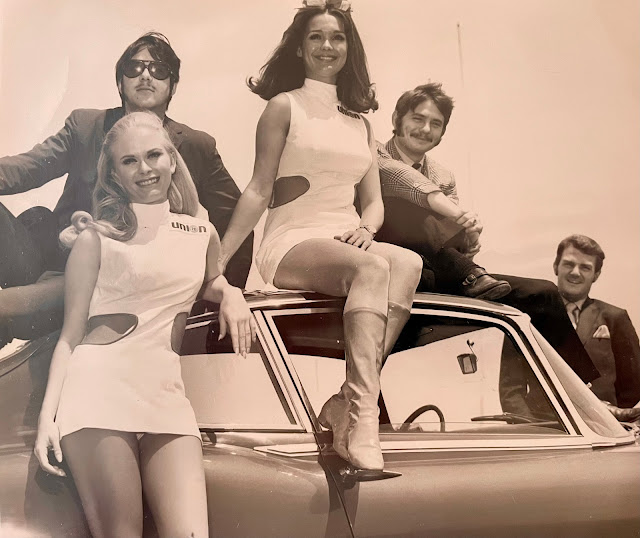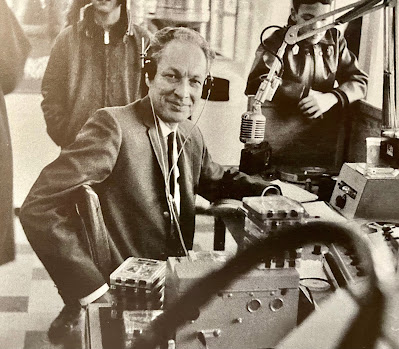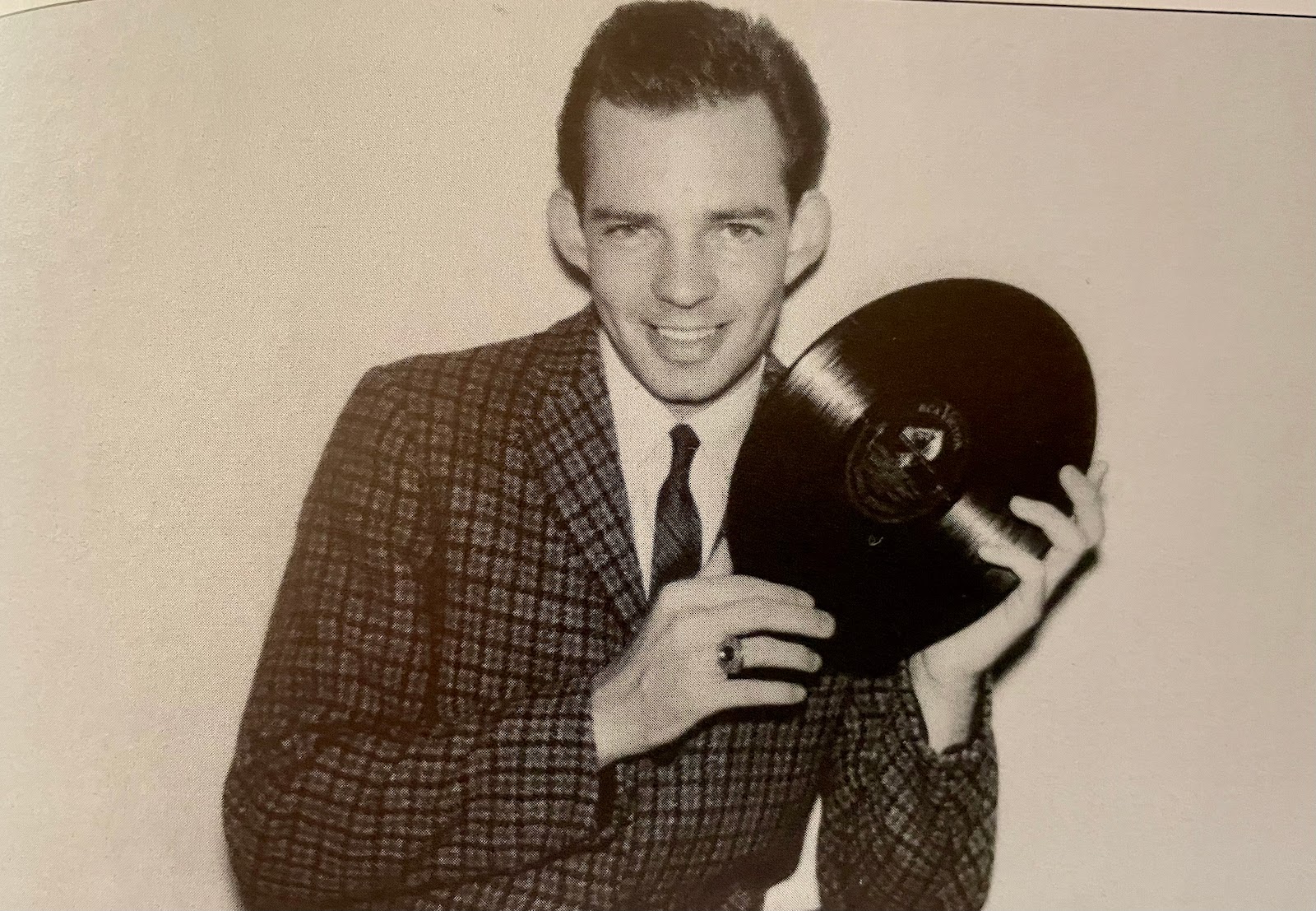He was a kind and gentle soul. A wanderer in the mysteries of the cosmos. A polymath in life and living. A maestro in communication. A skilled professional in a storybook path of careers. He was the kind of person you wanted to be around.
I met Griff in the air studio of WNAP in 1969. I’d heard he was the guy who had spent a few years in San Francisco. Since the “Summer of Love” it was the west coast capitol of new music and culture.
He was the morning man on one of the first pioneering FM rockers in the country, and I was the hard news guy from the front of the building and a 50 thousand watt AM radio giant “The Voice of News…”
Griff was hip, music wise, and the first person I heard use the word karma in conversation. He had prowled San Francisco music and hippie culture on weekends. During the week he was on duty at Alameda Naval Air, on the bay. His desk looked across the bay and the bridge to San Francisco. It also oversaw the flag-drapped caskets of Viet Nam casualties on their return to the US.
He had a cool and a depth. It was a time for being real. Martin Luther King and Bobby Kennedy has been gunned down just months before, cities were burning, the war claimed hundreds of kids every month, “flower power,” “power to the people,” “Black power” and the “Generation Gap” were pushing America to places it had never been. In the midst of this, Griff was the master of music mixes that weaved moods, stories, and painted realities that became an escape, or a ride through it all. I was to be the voice that brought news to the new and alternative consciousness and psychographic.
Griff was the guru, the music director of a band of young radio artists and personalities who understood the zeitgeist was changing, and they would be change agents.
I was just back from Europe where bride Lana and I spent a few months, she indulging my attempt to pick up the trail of Daniel Cohn-Bendit “Danny the Red.” He had been the leader of the student uprisings in France months before and was on the run. There were still signs of the strikes and riots all around Paris and on the Left Bank where we stayed. I wanted to interview “Danny La Rouge” and we got close in Germany, in the anti-war and radical sub culture of music, protest, disco and free form political theater. London, Rome, Berlin were all engaged as Radio Luxembourg and the on-ship pirate radio stations were muscled up “pied pipers” leading millions of boomers into a new land of self-awareness.
The WNAP air staff was a generation and culture away from WIBC the traditional and legacy powerhouse. Truth is, some of the front of the building didn’t understand, nor like the idea of long-haired freaks in the back.
I still chuckle, some thought it was "illegal or unholy" to play album rock on the FM band. In practicality, Griff and I were to be the “peace negotiators,” the experiment of fusing through generational and cultural divides. It was a slam dunk.
We hit it off immediately. A plus was Lana. He was impressed she had been so adventurous as to drive through East Germany into Berlin at the height of the cold war and at a time when people were still being shot on the wall. He thought I was a good judge of people. AND she made clothing bands wore when performing under dark and strobe lights, at a time of psychedelic music and light shows. In that Lana made me, a non-musical, overly serious street reporter “news guy” more acceptable to the Mr. Cool.
Griff liked that I was a writer. He had been a South Bend Tribune police beat reporter just out of school. I had done the same thing in Muncie. Both were tough mid-western cities quickly becoming part of the “rust belt” and we shared a sobering look at life through the lens of homocides, fires, car crashes, drownings, and the mayhem of a city. He also thought it was great I did yoga!
This piece of the story, this relationship nexus, the foundation of a friendship, is important because Griff and I understood it was cool to improvise, invent, create and let a new radio style develop naturally. It was that process that seeded the friendship, a mutual respect that lasted for 56 years.
In those days a radio newscast was a formal and highly produced event at the top of the hour and in peak listening hours on the half hour. It involved a big sounder or theme, maybe drums or teletype, a deep voiced announcer, announcing the start, something to set it apart. We were answering the muse of the counter culture and turned it into a casual, conversational, informal and very contemporary flow of information. We covered different items too; the environment, nutrition, science, art, music business, spirituality, and counter culture politics. It was different, it was new, it was successful and more importantly it’s how he and I talked with each other for the next half a century. Pick a topic, we could riff, and build a kind of rhythm and converse all around the cosmos. There was hardly anything we did not find interesting, except violence, of any sort. We were peace lovers about everything in life.
We continued to converse like that even when our careers took us in different directions.
Griff was simply a genius communicator. As a DJ he was an “artist.” With those “great pipes” he was always in demand as a voice over talent for commercial and production companies.
Producers of “big event” live coverage of award banquets or shows loved him because with all the chips on the line, millions of dollars invested, the manic activity of multiple cameras, and all the vagaries of live television, he was the cool and polished voice in the booth that smoothly talked its way into the big show, all the while a director in his ear giving him a count down.
He and Jacque published a weekly culture and entertainment news paper from Broad Ripple Village. It was pitch perfect for the time.
His love of music took him on a path where he produced records. It’s a technical art that is a highly complex mastery of sound and performance.
Even in retirement out here on the central coast he could never attend a live music show without making some suggestion about the sound mix. We’ve been lucky to have troubadours Jill Knight and Eric Williams “score” the life of people here for the better part of 2 decades. I can’t count how many times we have seen and heard them. These great artists listened to Griff.
He knew many major artists and some were friends. He gained their friendship when he spent time on the road as a show promoter’s producer. He’d get to the big arena a day ahead of the concert and go to work with lighting and sound techs, unions, transportation teams, manage how and when the unload and set up would occur. He’d work with caterers, law enforcement and crowd control and local officials. He managed the process. Everyone from big star to roadies appreciated his skill and loved his personality.
Griff’s specialty was communication, image, training drivers on tv and interview skills, making promotional pieces, engaging sponsors. When the league moved to including night time races on the circuit Griff researched and tested until he found a way to paint the car’s surface so that is glowed, or shone on camera under the lights. Needless to say everyone else wanted to know his secret.
He loved the Indy 500, maybe as much as anyone, ever.
On race day, when he could no longer be in the pits, he’d set himself up at home. He’d have earphones, a lap-top, the television on, had dialed in to get the frequency of the team’s radio link to the driver and their track spotters. Who else ever did that?
He was one of a kind.
About 5 years ago he was given a diagnosis that gave him odds to live 12, maybe 18 months. He continued to live with enthusiasm and joy. He had setbacks to be sure, but his spirit was exemplary. Over and over friends would be “amazed” at “how unbelievable and incredible” “you’d never know!” He didn’t like to dwell on the illness, he was more interested in others and whatever was on their mind.
I was fortunate to spend even more time with Griff in the last few years. We’d drive to blood draws or lab work and always worked a late breakfast or lunch. Up and down Highway 1, the Pacific gleaming or rolling in and we remembered the people and events and our common history. We also talked about the future, the unknown. He always gave tribute to his “Queenie” Jacque, for keeping him alive, being his case manager and advocate.
He had an indomitable spirit, an Irish zest and love for all things. In the tough last months, he cherished his orchids, purchased a Nikon-he was an extraordinary shooter-they adopted a new family member, Luna, a rescue dog, and he was thinking how he might set up a small solar array to feed an emergency battery.
He did not want to leave this life, but he was excited about what kind of adventure the next chapter would be. A couple of weeks ago he told me it felt like “his body was changing.” He said “it was odd, I feel like it’s in transition.”
I asked him “are you going to be a pupa or butterfly?”
It was the biggest chuckle I’d heard in months. “Oh, that’s a good one, that really is!” He smiled.
Eventually a killing illness took his body from him and he courageously labored until he just slipped away in his deep sleep.
But that indominable spirit? Well, Griff had been a hot air balloonist, and he built and flew a small airplane. He loved to go up, especially in the vintage planes and racers. I like to think that spirit is in free flight, attached to big smile. Wow!
See you down the trail.




















































